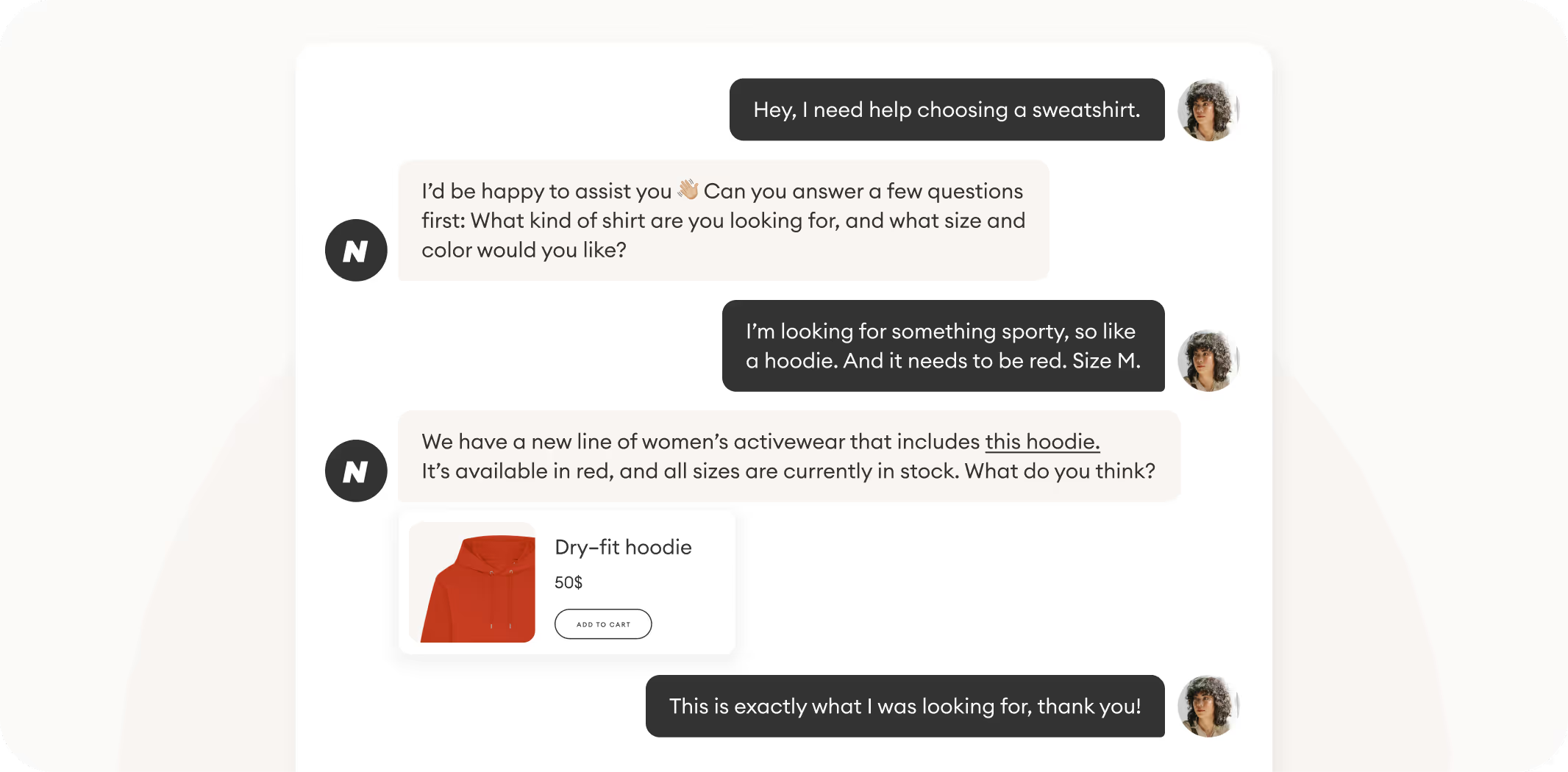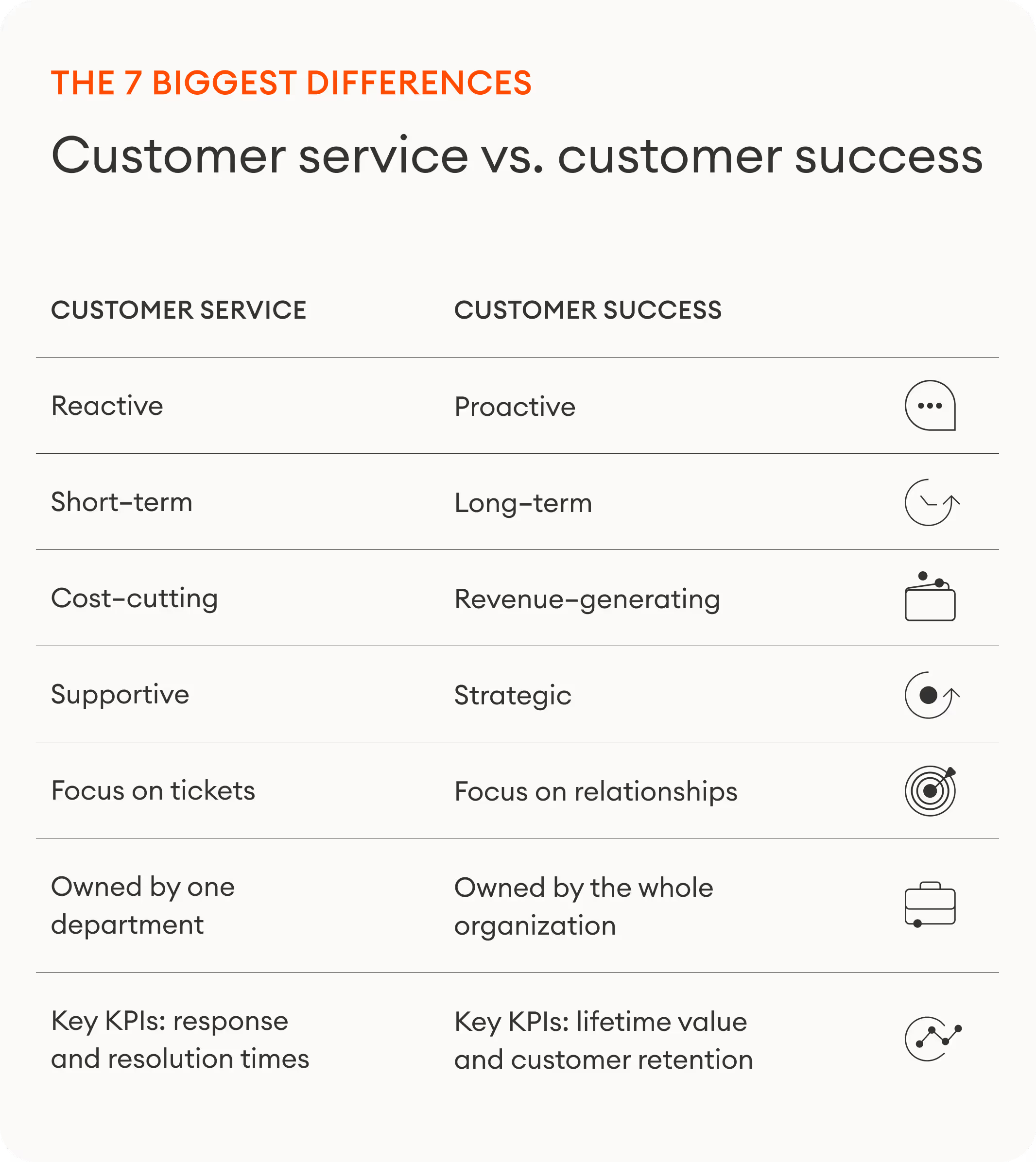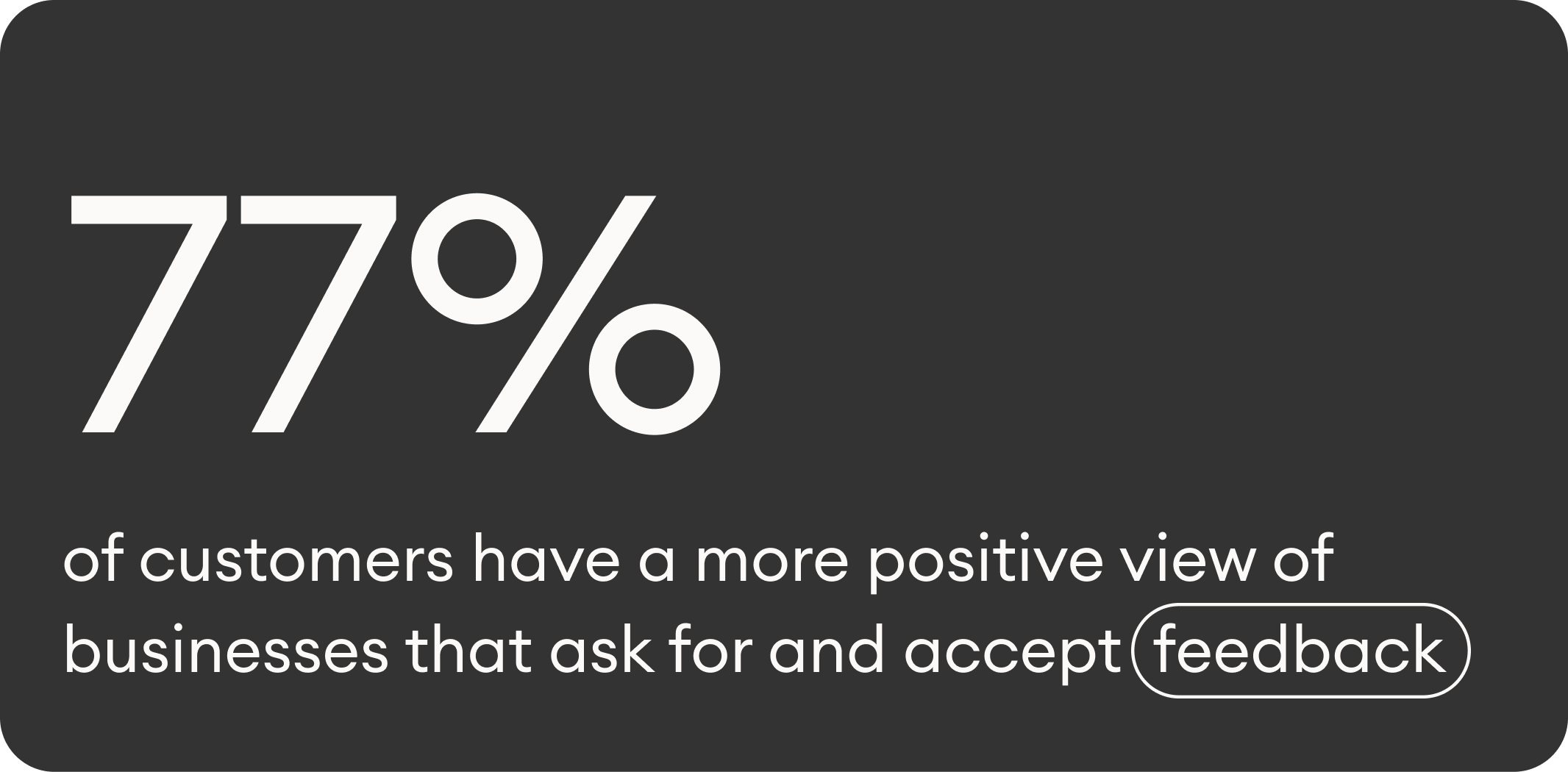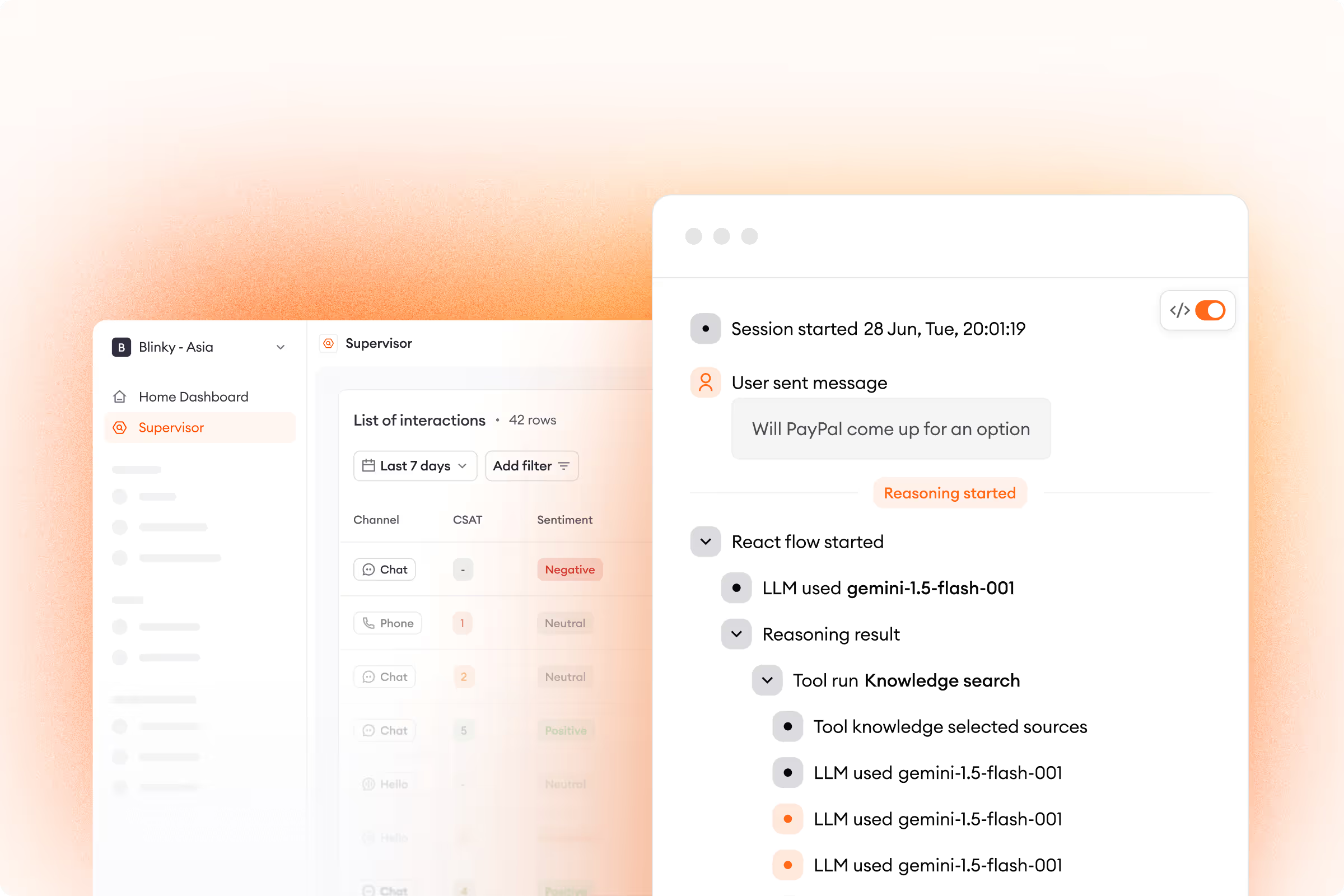The terms customer success and customer service often get used interchangeably, like a perpetual game of hot potato.
But are they really one and the same?
While there are some similarities between these two approaches to customer relations, there's also a world of difference that must be recognized in order to create a next-level customer experience.
In this blog post, we'll take an in-depth look at the differences between customer success and customer service. With these insights, you’ll be better equipped to deliver the exact type of care your customers are expecting.
What is customer service?
Customer service is help that a company gives to people who use its products or services. It’s usually reactive, meaning customers first ask about an issue they need assistance with, and then support teams respond with info concerning that specific issue.
Customer service agents assist customers in handling common issues like troubleshooting faulty equipment, locating missing orders, or answering product-related questions.
What does a customer service team do?
Customer service teams typically oversee the following tasks:
- Answer FAQs: The average customer service agent handles 17 tickets each day. The majority of these are repetitive questions that require simple answers, like those asking about order status, return policies, or pricing info. Agents guide shoppers to the right information, even though their expertise isn’t really needed.
- Handle urgent cases: Not all customer queries are straightforward, however. Customer service teams are also there to help out in uncommon situations that require a specialist’s touch. Is a product malfunctioning or unsafe for children? How can a complaint be rectified? Support reps are the face of the company in such cases and are trusted to consistently give accurate, empathetic care.
- Report customer concerns: After listening to customer issues, service reps perform the invaluable task of sharing what customers are saying with the rest of their organization. This is the most effective way for businesses to introduce improvements based on customer feedback. Agent insights can be responsible for upgrades as far-reaching as modifying products, streamlining the sales process, and making information easier to find on your website.
- Act as product experts: When shoppers aren’t sure which item is best for them, support agents can share their expertise and help customers find the most suitable product. Reps can provide data as diverse as sizing info, availability, and customer reviews to reassure shoppers before making a purchase.
Since excellent customer service needs to be both fast and empathetic, the most important metrics to track it are:
- First response time (FRT): FRT measures how long it takes a support agent to send a customer their initial reply. It’s important to keep it low so customers aren’t left asking how long until someone answers my question?
- First contact resolution (FCR): FCR shows the percentage of customer requests that are instantly resolved after a customer’s first interaction with a business. FCR rises as more customers get their issues handled after asking a single question.
- Customer satisfaction score (CSAT): CSAT indicates how pleased shoppers are with a company’s customer service. To obtain these scores, businesses ask customers survey questions after a service interaction.
Take a deep dive into customer service metrics in our blog post, Top 6 Customer Service Metrics You Should Measure.
Use case: customer service in action
As customer needs evolve, so does customer service. Here are some common examples of what customer service looks like.
First, Travis is waiting to receive an order he placed online, but his estimated delivery date has already passed. He turns to the ecommerce store’s chat widget, asks about his order status, and gets an immediate update with all the information he requested.

In our second example, Taylor is browsing an online store and needs help choosing a product. She asks for assistance via chat and, after a short conversation, receives a customized list of product recommendations.

Traditionally, human agents would be needed to manually respond to every chat, phone call, or email from customers seeking out this kind of help and search for the information themselves.
Today, however, AI chatbots enable companies to automate this entire process. Customers can interact with tools like chatbots that are capable of fully resolving up to 70% of customer questions. In cases that can’t be automated, agents can step in with all necessary info right at their fingertips, making it easier for them to offer fast, accurate support.
See how Zowie’s AI-powered automation platform has become a natural extension of Missouri Star Quilt Co.’s customer service team in our case study.
What is customer success?
Customer success is the process of working with customers to help them reach their desired outcomes when using a company’s products or services.
As opposed to the short-term nature of customer service, customer success has a long-term focus that emphasizes building a relationship with customers. While customer service largely consists of reactively responding to issues raised by shoppers, customer success involves proactively addressing shoppers’ concerns before they ever get aired.
Business strategy is a cornerstone of customer success. Agents will typically hold planning sessions, analyze which processes are working and which aren’t, and cooperate with clients to find ways to improve your partnership.
Learn all of the differences between reactive and proactive customer support — and how to leverage both — in our Reactive vs Proactive Customer Service blog post.
What does a customer success team do?
Customer success managers (CSMs) oversee teams that handle the following:
- Nurturing customer relationships: Success teams do far more than answer customer questions. They’re also closely involved in training, onboarding, and ongoing education to help shoppers feel empowered and inspired. In a business-to-business (B2B) setting, they’re devoted to understanding a company’s needs inside out and finding ways to facilitate company growth.
- Improving the customer journey: Customer success teams are responsible for making every contact point convenient and user-friendly. This means they want every interaction — from quick chats with first-time website visitors to post-purchase checks for your most loyal customers — to leave a lasting impression.
- Participating in the sales process: Part of delivering proactive service includes playing a larger role in completing sales. If shoppers ask about a product, customer success teams will look to upsell, cross-sell, and recommend relevant items. They can also take a proactive approach and inform users about new features, offer demos, and ensure customers are obtaining maximum value from their products.
Customer success is about having each interaction contribute to a customer’s goals. This is why the top customer success metrics are:
- Customer lifetime value (LTV): LTV measures the net profit a company can receive thanks to an ongoing relationship between a customer and the products they’re buying. Since customer satisfaction can boost brand loyalty, customer success teams work to increase a shopper’s LTV to provide their company with sustained financial benefits.
- Customer retention rate: This tracks how many shoppers a business has attracted and retained over a period of time (as opposed to how many have churned). Acquiring a new customer can be 5-7 times more expensive than retaining an existing one, so customer success teams work to keep one-off shoppers coming back for more.

Use case: customer success in action
The impact customer success can have on an organization is clearly seen in the software-as-a-service (SaaS) field.
Whenever businesses turn to new software to help in their everyday operations, they aren’t just purchasing a product. Top software providers know the importance of forging a long-term relationship with their clients, so they make themselves available to play an active role in achieving the company’s goals.
For new customers, success teams provide courses, tutorials, or templates to ensure the product is being used to its full potential. Dedicated agents are available to offer on-demand assistance whenever questions or unexpected issues arise.
Customer success teams also organize regular calls to discuss maintenance, updates, and a path for continued success.
Zowie’s customer success team is a prime example of this. Customers are onboarded with their dedicated expert on day one, crafting a detailed plan based on their unique needs. The specialist makes sure the solution is up and running in hours, but the team is always there to provide further support after launch. Our experts then routinely meet with clients to facilitate growth, improve performance, and offer tailored solutions based on each customer’s feedback.
Customer success vs customer service: the 7 biggest differences
Here’s a head-to-head comparison of the biggest differences between customer service and customer success:
1. Reactive vs proactive
When it comes to traditional customer service, shoppers usually first must ask for assistance, and customer support teams then react and provide help. In contrast, customer success traditionally involves a more proactive strategy that revolves around attaining customer goals before any problems arise. However, a mix of proactive and reactive support can be used in both customer service and customer success.
2. Short-term vs long-term
Customer service teams have short-term priorities. They want to minimize wait times and resolution times while maximizing the number of tickets they can handle. Customer success teams are more concerned with making a long-term impact by turning customers into brand advocates and bringing lasting benefits to their organization.
3. Cost-cutting vs revenue-generating
While customer service teams can drive sales, managers traditionally see minimizing business costs as a top priority. Customer success centers also value efficiency, but they see it as a step toward generating greater overall value through support.
4. Supportive vs strategic
Customer service gives support by answering customer questions. CSMs can do the same, yet the scope of their work is broader. Success teams look to make a positive impact on their organization in more ways than just offering support.
5. Focus on tickets vs focus on relationships
To meet their objectives, service teams must move quickly to close as many tickets as they can. On the other hand, customer success affords teams more freedom to build relationships with customers since they’re cooperating with them over a longer period rather than an interaction or two. In many organizations, each customer will even have a dedicated customer success rep.
6. Owned by one department vs owned by the whole organization
Customer service departments often act independently and take full responsibility for their performance, whether that’s how many tickets they’re closing or how satisfied customers are. Customer success plays a company-wide role as their actions can directly help other teams. Sales teams have an ally when it comes to upselling, and product teams can hear where improvements are most needed straight from the source.
7. Response times vs retention
Customer service teams concentrate on metrics like response and resolution times. Customer success teams usually track KPIs like lifetime value and customer retention.

Combining customer success and customer service
While the differences between customer success and customer service can seem like a lot, there really is a lot of overlap between these two teams. In fact, the customer service/success role is one and the same in many organizations.
Ultimately, both have the same end goal: to provide the best customer experience possible.
Customer service does this by resolving issues and addressing pain points, and customer success achieves this by working hand-in-hand to meet their objectives.
In short, both service and success are all about helping customers out whenever they need assistance. They simply differ in the kind of help they provide and the timing of that help.
Based on these similarities, here are 5 tips for improving both your customer service and customer success.
5 tips for improving your customer success and customer service
1. Personalize interactions
Regardless of which role you’re in, making shoppers feel special will result in higher satisfaction and greater loyalty.
In customer service, personalizing interactions can be achieved by addressing shoppers by their name, recalling purchase histories, and offering exclusive deals, like a birthday discount. For customer success, customizing your offer based on each customer’s needs — instead of forcing everyone to accept a one-size-fits-all solution — will get the job done.
2. Follow up regularly
Just because a given issue is resolved doesn’t mean customer contact should be shut down. Actually, the opposite is true — customers will appreciate it when teams check in on them.
Customer service agents can send follow-up emails after an order is delivered to double-check that everything is just right. Likewise, customer success reps can have routine calls with clients, giving them a chance to voice any concerns they may have.
3. Simplify customer interactions
Even if customers are reaching out to complain, there’s still a lot customer care professionals can do to enhance their experience. By streamlining interactions so they’re short, direct, and meaningful, agents are able to turn a seemingly lost cause into a satisfied customer.
Service reps can accomplish this by offering omnichannel capabilities and answering questions on whatever support channel customers prefer. Also, have an intelligent routing system in place to ensure customers instantly get to the right specialist, preventing needless handovers along the way.
And customer success teams can do the same. Have processes in place so buyers know exactly how and when they can reach you. You can schedule a routine call, but let customers know channels like email are an option for more urgent matters.
4. Understand your customer journey
Great customer care isn’t about giving each shopper the same blanket support. By recognizing what stage of the customer journey a buyer is in, teams can tailor their service and touch on each shopper’s distinct needs.
In customer service, this means understanding which shoppers are first-time visitors to your website who are seeking general product info and which are loyal return customers who are asking about existing orders.
For customer success, it’s essentially the same — are you dealing with a new customer who needs additional assistance to correctly use your product? Or are you interacting with a tenured buyer who knows the basics but might benefit from some premium features?
Knowing where shoppers are at in the customer journey enables teams to offer the most appropriate support for each case.
5. Act on customer feedback
77% of customers have a more positive view of businesses that ask for and accept feedback.
Customer service reps can easily collect feedback by generating post-chat surveys after each customer interaction, and their teams can then analyze the data to determine what steps to take next.

Customer success reps similarly rely on feedback to learn which processes are working well and which aren’t. By consistently monitoring user input, success teams can guarantee customers are enjoying an optimal experience.
An elevated customer experience
Yes, customer success and customer service have their differences, but they’re both fundamental aspects of the customer experience.
And AI-powered automation technology can help organizations coordinate both so that they deliver enhanced interactions that benefit agents and customers alike.

.avif)







